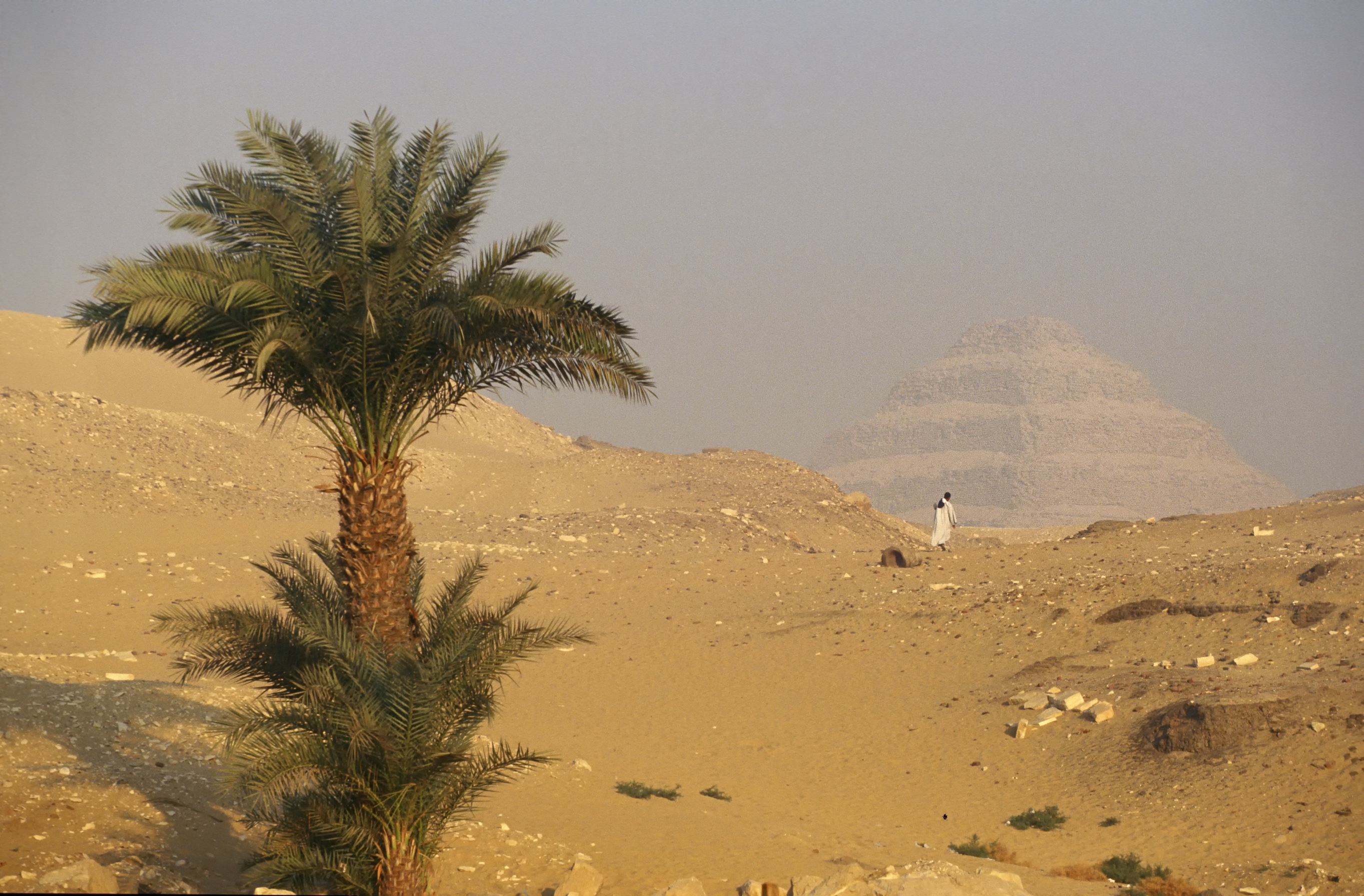Od Memfis do Teb

Piaski nekropoli w Sakkarze z piramidą Neczeriheta w tle
Jedną z najstarszych części nekropoli memfickiej jest Sakkara, która zgodnie ze staroegipskimi wierzeniami położona była na zachodnim brzegu Nilu, tam gdzie zachodzące słońce, czyli bóg Ra, rozpoczynał swoją wędrówkę po Zaświatach. Podobnie jak większość egipskich nekropoli, Sakkara była miejscem pochówku dla tysięcy Egipcjan przez ponad trzy tysiące lat. Najstarsze grobowce na tym terenie powstały już w czasach I dynastii (3100-2900 p.n.e.) i nieprzerwanie teren ten służył jako miejsce pochówku kolejnych pokoleń aż do czasów rzymskich. Niewątpliwie najsłynniejszym grobowcem wzniesionym na terenie nekropoli w Sakkarze jest piramida schodkowa Neczeriheta, znanego również jako Dżoser, króla III dynastii (2686-2613 p.n.e.).
ENG
The Sands of the Saqqara Necropolis with the Djoser Pyramid in the Background
One of the oldest parts of the necropolis in Memphis is Saqqara, which - according to ancient Egyptian beliefs - was located on the west bank of the Nile, where the setting sun, the god Ra, began his journey through the Underworld. Like most Egyptian necropolises, Saqqara has been the burial site for thousands of Egyptians for over three thousand years. The oldest tombs in this area were built in the times of the 1st Dynasty (3100-2900 B.C.); the area continued to serve as a burial place for subsequent generations until the Roman times. Undoubtedly, the most famous tomb erected in the necropolis in Saqqara is the step pyramid of Joser, also known as Zoser, king of the 3rd Dynasty (2686-2613 B.C.).